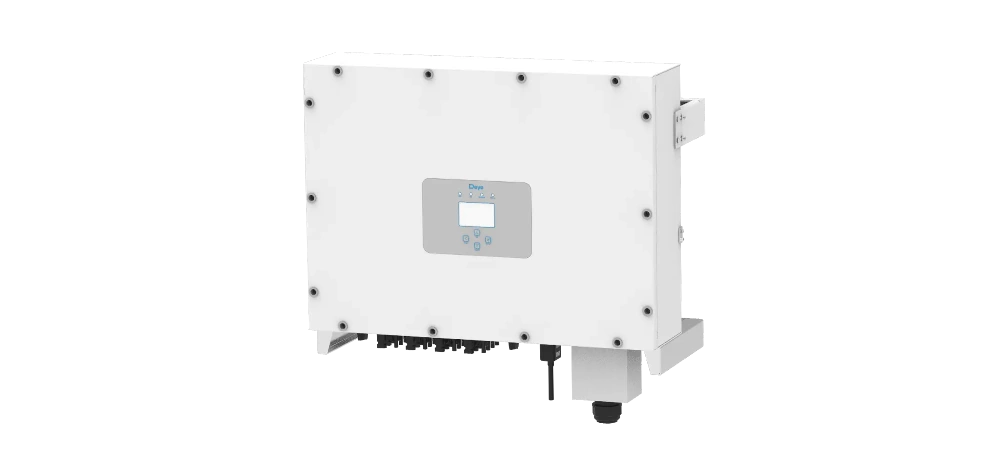50KW Solar System Design and Implementation
In the pursuit of sustainable and clean energy solutions, solar power systems have gained significant traction. Among these, the 50KW solar system stands out as a substantial and impactful installation, capable of powering commercial establishments, industrial facilities, and even larger-scale residential complexes. In this technical article, we will delve into the intricacies of designing and implementing a 50KW solar system, covering key components, considerations, and the steps involved in realizing an efficient and effective solar power solution.
A 50KW grid solar power system is a remarkable example of harnessing the immense potential of solar energy. This solar panel system, include solar panels a complete network of them. They operate seamlessly to generate an impressive amount of power. The system works by capturing sunlight and converting it into electricity. Which can be used to meet the energy needs of a wide range of applications. from residential homes to commercial establishments. The battery energy generated is not only used in real-time but also used to store the solar energy for future use through batteries and inverters. Ensuring a reliable and consistent energy supply. The 50KW solar system design excelled in power generated, enhancing energy sustainability for the site.
The grid-connected solar power system’s design allows it to seamlessly integrate with the existing electrical grid infrastructure. It not only provides energy for immediate consumption but also enables excess energy to be fed back into the grid, thus contributing to a sustainable energy ecosystem. This dual functionality, to both consume and contribute power, underscores the efficiency and versatility of such solar panel systems. By utilizing a combination of solar panels and batteries, it optimizes energy generation and storage, making it an intelligent solution for a greener and more sustainable future.
Understanding the 50KW Solar System
A 50KW solar system is a substantial photovoltaic (PV) array capable of generating 50 kilowatts of electricity. It typically consists of solar panels, inverters, mounting structures, wiring, and monitoring systems. The primary goal of such a system is to harness sunlight and convert it into usable electrical energy, contributing to energy self-sufficiency and reducing reliance on conventional power sources.
Components of a 50KW Solar System
- Solar Panels:
The heart of any solar system is the solar panels themselves. In a 50KW setup, the number of panels required will depend on the wattage and efficiency of the panels chosen. High-efficiency panels are favored for commercial installations where space may be limited.
- Inverters:
Inverters play a crucial role in converting the direct current (DC) generated by solar panels into alternating current (AC) electricity suitable for consumption. In a 50KW system, multiple inverters might be employed, each handling a portion of the generated power for optimal efficiency.
- Mounting Structures:
Sturdy and well-engineered mounting structures are essential to support the weight and ensure proper orientation of the solar panels. These structures need to withstand various weather conditions over the system’s lifespan.
- Wiring and Protection:
The wiring in a 50KW solar system must be appropriately sized to handle the generated power safely. Additionally, protection devices such as circuit breakers and surge protectors are crucial to safeguard the system from overloads and voltage fluctuations.
- Monitoring and Control:
Implementing a monitoring and control system allows for real-time tracking of the system’s performance. This enables prompt identification of issues and ensures the system operates at its optimum capacity.
Design Considerations
- Location and Space:
Select a suitable location for the solar array based on factors like sunlight exposure, shading, and available space. Optimizing the positioning and angle of the panels enhances energy generation.
- Energy Needs:
Assess the energy consumption of the facility to determine the appropriate size of the solar system. A 50KW system is designed to offset a significant portion of energy usage, leading to cost savings over time.
- Grid Connection:
Determine if the system will be grid-tied, allowing excess energy to be fed back into the grid, or if it will operate independently (off-grid). Grid-tied systems might require additional permits and equipment for seamless integration.
- Inverter Capacity:
The capacity of the inverters should match the solar array’s output. Distributing the load among multiple inverters helps improve system reliability and efficiency.
Implementation Steps
- Site Assessment and Planning: Evaluate the site’s solar potential and conduct a thorough assessment of energy needs. Plan the layout of the solar panels and determine the optimal orientation.
- Component Procurement: Source high-quality solar panels, inverters, mounting structures, and other necessary components from reputable suppliers.
- Installation: Mount the solar panels on the designated structures and wire them to the inverters and the electrical system. Ensure proper grounding and adhere to safety regulations.
- Inverter Installation: Install the inverters, ensuring they are adequately ventilated and positioned in a suitable location.
- Wiring and Connection: Connect the solar panels, inverters, and protection devices using appropriate wiring and cabling techniques. Ensure all connections are secure.
- Testing and Commissioning: Thoroughly test the entire system, checking for proper functionality, voltage levels, and safety measures.
- Monitoring System Setup: Implement a monitoring system that allows remote tracking of the system’s performance and immediate detection of any issues.
- Maintenance and Ongoing Monitoring: Regularly inspect and maintain the system to ensure optimal performance. Monitor energy production and consumption patterns to identify opportunities for further efficiency improvements.
Conclusion
A 50KW solar system represents a substantial investment in renewable energy, offering significant benefits in terms of cost savings, reduced environmental impact, and energy independence. The design and implementation of such a system require meticulous planning, careful component selection, and adherence to technical guidelines. By considering factors such as location, energy needs, and system components, you can create an efficient and reliable solar power solution that contributes to a more sustainable future.

